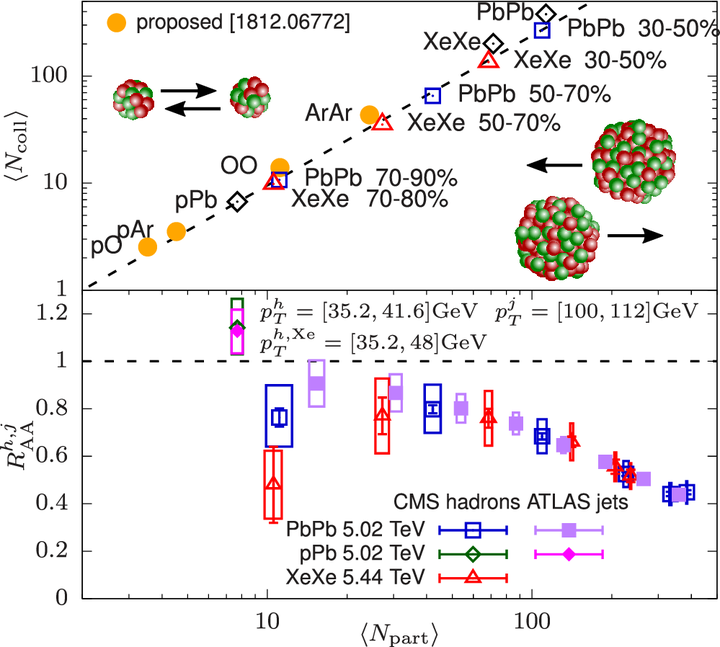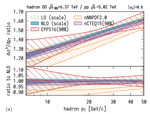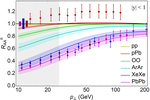High-pT partonic rescattering
 Disapearence of jet and hadron quenching with decreasing system size
Disapearence of jet and hadron quenching with decreasing system size
Perhaps the greatest challenge to the consistent understanding of QCD matter formation is the disappearance of the observable energy loss of high momentum hadrons in small collisions systems. As the number of participant nucleons in peripheral lead-lead collisions reduces to order 10, the hadronic and jet nuclear modification factors approach unity. The large systematic uncertainties are preventing an accurate determination of energy loss in centrality selected collisions. However inclusive oxygen-oxygen (OO) collisions planned in the next run of LHC are free from such systematic uncertainties. Together with my colleagues at CERN, I have been working to quantify and predict the expected energy loss signal in OO collisions. We employed state-of-the-art perturbative QCD calculations of jet and Z-production cross sections with nuclear parton distribution functions to determine a precise theoretical baseline in the absence of medium induced modification. Combined with a number of energy loss models in small systems, we were able to conclude that OO collisions have sufficient sensitivity to discover energy loss in a system of about 10 colliding nucleons.


